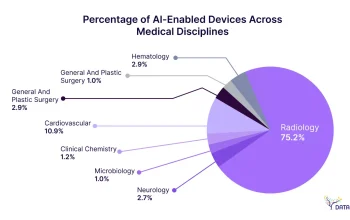Imagine a surgeon’s hands guided by an invisible force—steady, precise, and tireless. That’s the promise of AI-assisted surgery. It’s not science fiction anymore. Hospitals worldwide are already using artificial intelligence to reduce human error, improve recovery times, and push the boundaries of what’s possible in the operating room.
How AI Is Changing the Surgical Game
Let’s be honest—surgeons are incredible, but they’re human. Fatigue, hand tremors, even the occasional distraction can creep in. AI doesn’t replace surgeons; it augments them. Think of it like a co-pilot who never blinks.
Real-Time Decision Support
During complex procedures, AI analyzes data from imaging, vitals, and even the patient’s medical history—instantly. It flags potential complications before they happen, like a GPS rerouting you around traffic. For example, in tumor removals, AI can highlight cancerous tissue margins in real time, reducing the need for follow-up surgeries.
Robotic Precision
Robotic systems like the da Vinci Surgical System use AI to filter out hand tremors, allowing for incisions smaller than a grain of rice. The result? Less blood loss, fewer infections, and scars that fade faster. It’s like performing microsurgery with the steadiness of a machine.
Where AI Shines Brightest
Not all surgeries benefit equally from AI—yet. Here’s where it’s making the biggest splash:
- Orthopedics: AI helps place joint replacements with sub-millimeter accuracy, reducing wear and tear over time.
- Neurosurgery: Mapping brain tumors becomes less guesswork, more chess match—AI predicts how tissue will shift during surgery.
- Cardiology: In stent placements, AI analyzes blood flow patterns to optimize device positioning.
The Numbers Don’t Lie
Here’s what studies are showing about AI in surgery:
| Metric | Improvement with AI |
| Surgical precision | Up to 50% fewer errors |
| Recovery time | 20-30% faster |
| Hospital stays | Reduced by 1-3 days |
And get this—some AI systems can now predict postoperative complications 48 hours in advance, giving teams time to intervene.
The Human-AI Partnership
Here’s the deal: AI isn’t taking over the OR. The best outcomes happen when surgeons collaborate with the tech. Like a jazz duet—human intuition meets machine precision. For instance, AI might suggest an optimal incision path, but the surgeon adjusts for the patient’s unique anatomy.
Training the Next Generation
AI is also revolutionizing surgical training. Virtual reality simulations, powered by AI, let residents practice high-risk scenarios endlessly—no patients harmed. It’s like flight simulators for surgeons, complete with haptic feedback that mimics the resistance of real tissue.
Challenges? Sure, There Are a Few
Nothing this transformative comes without hurdles:
- Cost: AI systems require hefty upfront investment—though they often pay for themselves in reduced complications.
- Data privacy: Patient records fuel AI algorithms, so cybersecurity is non-negotiable.
- Surgeon buy-in: Some veterans distrust “black box” algorithms—transparency in AI decision-making is crucial.
That said, hospitals adopting AI are seeing such dramatic improvements that resistance is fading fast.
What’s Next? The Future Looks Sharp
We’re on the cusp of even wilder advances. Imagine nanobots guided by AI, repairing blood vessels from the inside. Or AI predicting which patients will develop complications before they’re even wheeled into surgery, based on genetic markers.
The line between human and machine in medicine is blurring—not to replace us, but to make us better. And honestly? That’s a future worth cutting into.



